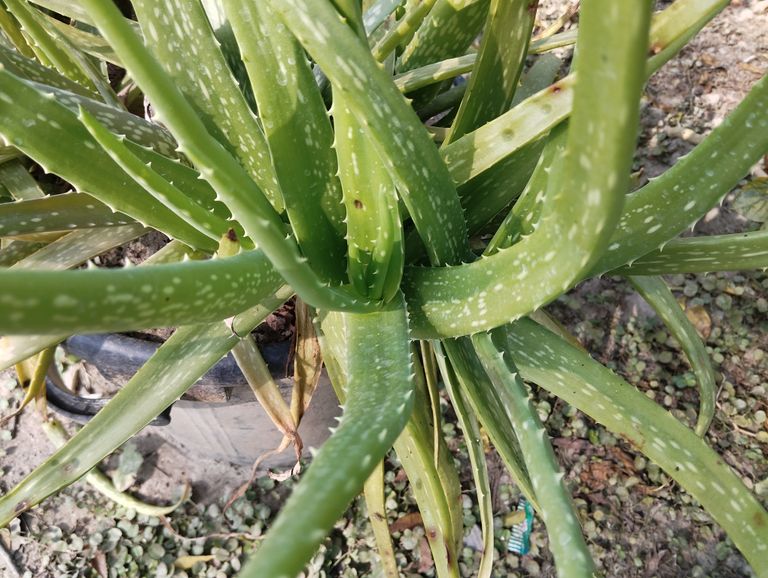
Cultivating Aloe Vera on Raised Beds A Comprehensive Guide.
Aloe vera, known for its medicinal and cosmetic benefits, is a versatile plant with high demand in the pharmaceutical, cosmetic, and health industries. Cultivating aloe vera on raised beds offers several advantages, including improved drainage, better root development, and ease of harvesting. This blog explores the step-by-step process of cultivating aloe vera using this method.
Why Choose Raised Beds for Aloe Vera?
Raised beds are elevated sections of soil that provide better aeration and water drainage, essential for aloe vera cultivation. They also reduce the risk of waterlogging, which can harm the plant. This method is particularly effective in areas with heavy rainfall or clayey soil.
Benefits of Aloe Vera Cultivation
- Economic Value: Aloe vera gel and extracts are used extensively in skincare, health products, and beverages, creating a lucrative market for farmers.
- Low Maintenance: The plant requires minimal water and fertilizer, making it suitable for regions with scarce resources.
- Medicinal Properties: Aloe vera contains over 75 active compounds, including vitamins, enzymes, and antioxidants, making it a prized crop globally.
Ideal Conditions for Aloe Vera Cultivation
- Climate: Aloe vera thrives in arid and semi-arid regions with temperatures ranging from 20°C to 35°C.
- Soil: Sandy or loamy soil with good drainage and a pH level between 6.0 and 7.5 is ideal.
- Sunlight: The plant requires 6–8 hours of direct sunlight daily.
Step-by-Step Guide to Cultivating Aloe Vera on Raised Beds
- Preparing the Land
Site Selection: Choose a location with good sunlight exposure.
Clearing: Remove weeds, rocks, and debris from the field.
Soil Testing: Check for pH balance and nutrient content.
- Constructing Raised Beds
Dimensions: Raised beds should be 1–1.5 meters wide, 15–20 cm high, and of varying lengths based on the field size.
Spacing: Maintain a 30–50 cm gap between rows for easy maintenance and harvesting.
- Planting Aloe Vera
Selection of Varieties: Popular varieties include Aloe barbadensis Miller, the most commercially viable type.
Planting Material: Use healthy suckers or offsets for propagation.
Spacing: Plant the suckers at a distance of 30–60 cm, depending on the variety.
- Irrigation
Aloe vera is a drought-resistant plant and requires minimal water.
Irrigate once every 2–3 weeks, depending on weather conditions.
Avoid overwatering as it can lead to root rot.
- Weed Control
Remove weeds manually or with mulch to prevent competition for nutrients.
Regular weeding ensures healthy plant growth.
- Fertilization
Use organic compost or well-decomposed cow dung to enrich the soil.
Apply fertilizers sparingly, as excessive nutrients can affect the gel quality.
Harvesting Aloe Vera
- Harvest Period: Aloe vera is ready for harvest 8–12 months after planting.
- Method: Cut the mature outer leaves close to the base, leaving the inner leaves for continued growth.
- Frequency: Leaves can be harvested 3–4 times a year.
Common Pests and Diseases
- Aloe Mite: Causes gall-like growths; use neem oil or insecticides.
- Root Rot: Caused by overwatering; ensure proper drainage.
- Aphids: Suck sap from the leaves; use organic sprays for control.
Post-Harvest Management
Cleaning: Wash the harvested leaves to remove dirt and impurities.
Processing: Extract gel and pack for transportation or storage.
Storage: Store in a cool, dry place to maintain quality.
Economic Returns from Aloe Vera Farming
Aloe vera farming requires minimal investment but offers high returns.
A well-maintained aloe vera field can yield 10–12 tons per hectare annually.
Processed products like aloe vera gel, juice, and powder fetch higher market prices.
Cultivating aloe vera on raised beds is an efficient and sustainable farming method. With proper planning, care, and management, farmers can achieve high yields and profit while contributing to the growing demand for natural and organic products. Whether you're a seasoned farmer or a beginner, aloe vera farming is a rewarding venture that promises both economic and environmental benefits.
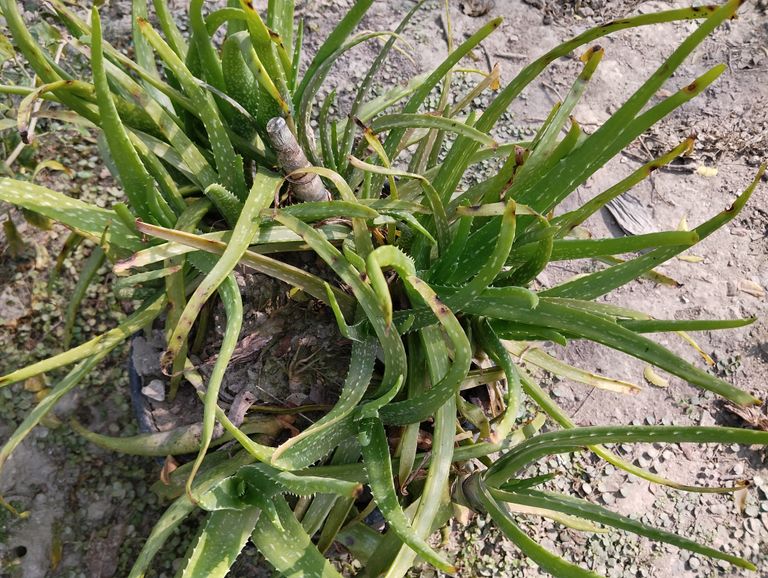
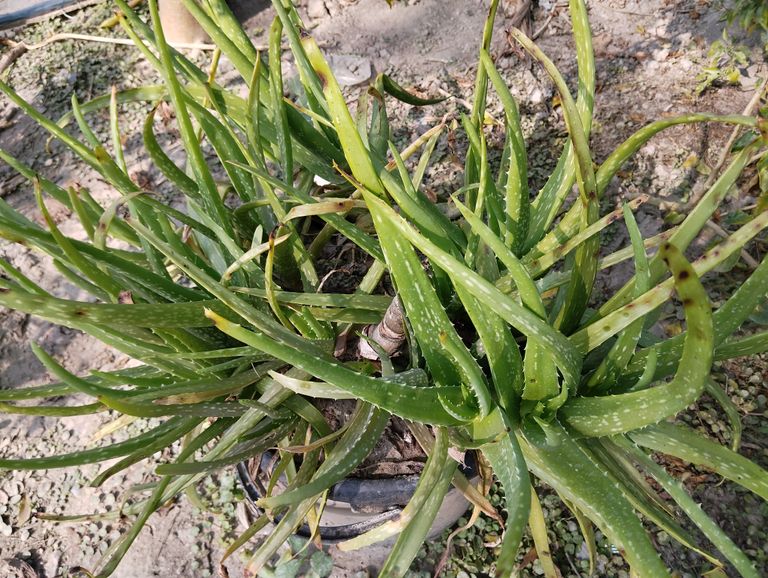
Aloe Vera Leaf Benefits: A Comprehensive Guide
Aloe vera, often referred to as the “wonder plant,” has been used for centuries for its medicinal and cosmetic properties. Its thick, fleshy leaves are packed with a gel-like substance that holds numerous health benefits. This blog will explore the benefits of aloe vera leaves and their various applications in skincare, hair care, and overall health.
- Boosts Skin Health
One of the most well-known benefits of aloe vera is its ability to enhance skin health.
Moisturizer: Aloe vera gel is a natural moisturizer that hydrates the skin without leaving it greasy.
Soothes Sunburn: Its cooling and anti-inflammatory properties make it a great remedy for sunburned skin.
Reduces Acne: The antimicrobial and anti-inflammatory properties help reduce acne and prevent future breakouts.
Anti-Aging Benefits: Aloe vera is rich in vitamins C and E, which improve skin elasticity and reduce wrinkles.
How to Use:
Apply fresh aloe vera gel directly to your skin daily for hydration and a soothing effect.
- Promotes Hair Growth and Scalp Health
Aloe vera is a natural remedy for several hair and scalp issues.
Hair Growth: It boosts blood circulation to the scalp, promoting hair growth.
Dandruff Control: Its antifungal properties help in reducing dandruff.
Conditioner: Aloe vera acts as a natural conditioner, leaving hair soft and shiny.
How to Use:
Mix aloe vera gel with coconut oil and massage it onto your scalp. Leave it for 30 minutes before washing it off.
- Aids Digestion
Aloe vera is beneficial for the digestive system when consumed in moderation.
Relieves Constipation: Aloe vera latex, found under the leaf’s skin, has natural laxative properties.
Improves Gut Health: It soothes the lining of the digestive tract and helps with issues like acidity and irritable bowel syndrome (IBS).
Detoxification: Its natural enzymes assist in detoxifying the digestive system.
How to Use:
Drink a small amount of aloe vera juice daily, but consult a healthcare provider for proper dosage.
- Boosts Immunity
The antioxidants present in aloe vera enhance the immune system.
Fights Free Radicals: Aloe vera contains antioxidants that neutralize harmful free radicals.
Reduces Inflammation: Its anti-inflammatory properties can reduce the risk of chronic diseases.
- Enhances Oral Health
Aloe vera is excellent for maintaining oral hygiene.
Reduces Gum Inflammation: It helps soothe swollen and bleeding gums.
Prevents Bad Breath: Its antimicrobial properties help combat bad breath.
Heals Mouth Ulcers: Aloe vera gel accelerates the healing of oral ulcers.
How to Use:
Use aloe vera-based toothpaste or mouthwash, or apply the gel directly to affected areas.
- Regulates Blood Sugar Levels
Aloe vera may help in managing blood sugar levels in people with diabetes.
Improves Insulin Sensitivity: Studies suggest that aloe vera helps enhance insulin sensitivity.
Lowers Blood Glucose: Regular consumption of aloe vera juice has been linked to reduced fasting blood glucose levels.
How to Use:
Take aloe vera juice in small quantities and consult your doctor for advice.
- Promotes Wound Healing
Aloe vera accelerates the healing of wounds, cuts, and burns.
Antiseptic Properties: It prevents infections in wounds.
Speeds Recovery: Its nutrients and hydration aid in quicker healing.
How to Use:
Apply aloe vera gel directly to the wound and cover it with a clean bandage.
- Supports Weight Loss
Aloe vera aids in weight management by improving metabolism and detoxifying the body.
Boosts Metabolism: Its active compounds enhance metabolic activity.
Aids Detox: Aloe vera flushes out toxins, supporting healthy weight loss.
How to Use:
Consume aloe vera juice before meals to reap its weight loss benefits.
Precautions When Using Aloe Vera
While aloe vera offers numerous benefits, it’s essential to use it correctly to avoid side effects:
Always patch-test before applying aloe vera gel to the skin to check for allergic reactions.
Avoid consuming aloe vera latex in large quantities as it can cause stomach cramps or diarrhea.
Pregnant and breastfeeding women should consult a doctor before consuming aloe vera.
Aloe vera leaves are a powerhouse of health and beauty benefits. From nourishing your skin and hair to improving digestion and boosting immunity, this wonder plant has something for everyone. Incorporating aloe vera into your daily routine can bring about noticeable improvements in your overall well-being. Always ensure you use fresh, natural aloe vera or high-quality aloe-based products for the best results.
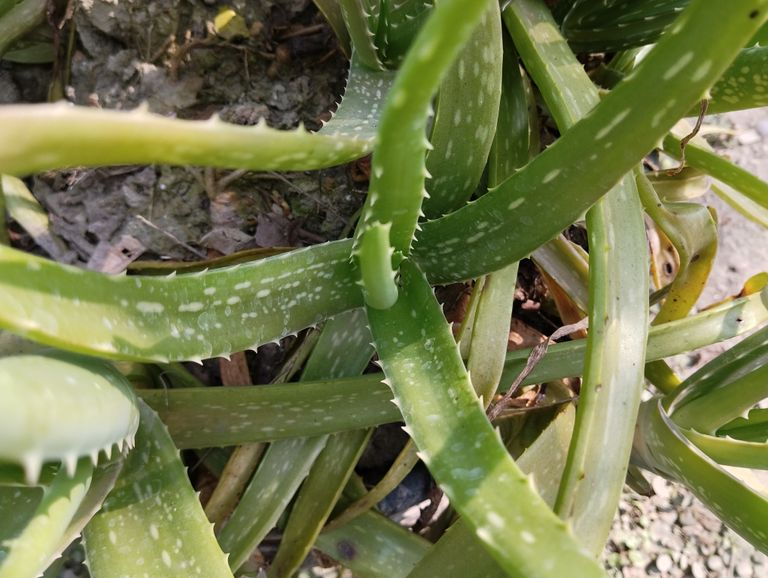
The Import of Aloe Vera Leaves: A Booming Industry
Aloe vera, often referred to as the "wonder plant," has long been prized for its medicinal and cosmetic properties. As global demand for natural products continues to rise, the import of aloe vera leaves has emerged as a lucrative business opportunity. This article explores the factors driving the import of aloe vera leaves, their uses, benefits, and the potential challenges in this growing industry.
Why Import Aloe Vera Leaves?
Aloe vera is native to arid regions but has found its way into markets worldwide due to its versatile applications. Many countries with limited or no suitable growing conditions rely on imports to meet domestic demand. Factors influencing this trade include:
- High Demand in Cosmetics and Healthcare:
Aloe vera is a staple ingredient in skincare, haircare, and health products. Its gel and juice are widely used for soothing burns, hydrating skin, and even aiding digestion.
- Year-Round Availability:
Importing fresh leaves ensures a continuous supply, allowing manufacturers to meet market demands without seasonal interruptions.
- Cost Efficiency:
Growing aloe vera in some regions may be more expensive due to labor and environmental constraints. Importing from countries with abundant production, such as India or Mexico, often reduces costs.
- Quality and Variety:
Some regions produce higher-quality aloe vera leaves due to favorable climatic conditions and cultivation practices.
Uses and Applications of Imported Aloe Vera Leaves
Imported aloe vera leaves cater to a wide range of industries:
- Cosmetics and Personal Care:
Aloe vera gel is a key ingredient in moisturizers, sunscreens, and anti-aging products.
It’s used in shampoos and conditioners to promote healthy hair growth.
- Healthcare and Pharmaceuticals:
Aloe vera juice is consumed for its digestive benefits.
It’s incorporated into topical creams for burns and wounds.
- Food and Beverages:
The plant is processed into health drinks and dietary supplements.
It’s also used as a natural preservative.
- Agriculture and Animal Care:
Aloe vera extracts are used in organic farming as a bio-fertilizer.
In veterinary medicine, it serves as a natural remedy for skin conditions.
Major Exporters and Importers
Top Exporters:
Countries like India, Mexico, Thailand, and China dominate the global aloe vera trade due to their favorable climates and well-established cultivation practices.
Leading Importers:
The United States, European Union nations, and Middle Eastern countries are significant importers, driven by high consumer demand for natural and organic products.
Challenges in the Aloe Vera Import Business
While the trade in aloe vera leaves is thriving, it comes with its own set of challenges:
- Quality Control:
Ensuring the freshness and purity of imported leaves is critical. Poor handling during transportation can lead to spoilage.
- Regulatory Compliance:
Each country has its own import regulations regarding plant products. Meeting these standards can be complex and costly.
- Pest and Disease Risks:
Imported leaves may carry pests or diseases that could harm local agriculture. Strict quarantine measures are essential.
- Market Saturation:
With more players entering the market, competition can drive down profit margins.
Future Prospects of Aloe Vera Leaf Imports
The demand for aloe vera products shows no signs of slowing down. As consumers increasingly seek natural and sustainable products, the aloe vera industry is set to expand further. Innovations in processing and packaging, along with the development of new applications, will likely open up additional opportunities.
The import of aloe vera leaves is a thriving industry that bridges the gap between production regions and consumer markets worldwide. Despite the challenges, it offers immense potential for businesses willing to navigate the complexities of international trade. With proper quality control, adherence to regulations, and a keen understanding of market demands, aloe vera importers can tap into this green goldmine for long-term success.
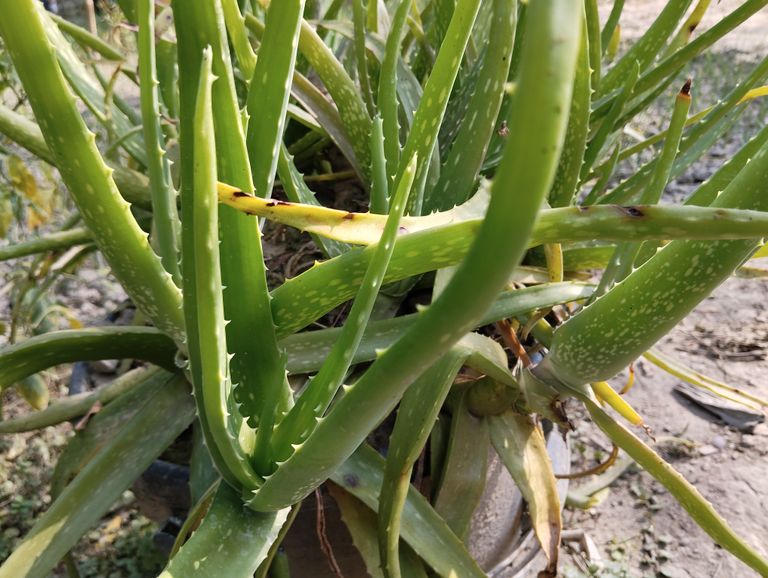
Types of Aloe Vera Plants
Aloe vera is a popular succulent known for its medicinal properties, easy maintenance, and striking appearance. With over 500 species in the Aloe genus, this plant offers incredible diversity. Each type has unique features, making them suitable for different climates, landscapes, and purposes. Let’s explore some of the most common types of aloe plants and their characteristics.
- Aloe Barbadensis Miller (Common Aloe Vera)
This is the most widely recognized species, commonly used in skincare, medicine, and cosmetics.
Appearance: Bright green leaves with small white spots when young, and yellow flowers when it blooms.
Uses: Known for its gel, which is rich in vitamins, enzymes, and amino acids. It’s effective for soothing burns, moisturizing skin, and promoting hair growth.
- Aloe Arborescens (Candelabra Aloe)
Native to South Africa, this aloe is a favorite for ornamental and medicinal purposes.
Appearance: Tall and tree-like, with narrow, spiky leaves and vibrant orange-red flowers.
Uses: The gel has healing properties similar to Aloe Barbadensis but is less concentrated.
- Aloe Polyphylla (Spiral Aloe)
This species is famous for its stunning spiral arrangement of leaves.
Appearance: Compact rosettes of leaves arranged in a perfect spiral, either clockwise or counterclockwise.
Uses: Primarily ornamental, as it is rare and difficult to cultivate.
- Aloe Ferox (Bitter Aloe)
Known for its robust size and medicinal properties, Aloe Ferox is another notable species.
Appearance: Large, fleshy leaves with reddish-brown spines along the edges, and striking red flowers.
Uses: Its sap and gel are used for digestive health, skincare, and as a laxative.
- Aloe Maculata (Soap Aloe)
This hardy species is admired for its vibrant flowers and adaptability.
Appearance: Leaves have white spots and sharp teeth along the edges. The flowers range from red to orange.
Uses: The sap produces a soapy froth, used for cleaning. It also has medicinal applications.
- Aloe Humilis (Dwarf Aloe)
A small aloe variety, perfect for indoor gardens and small spaces.
Appearance: Compact, blue-green leaves covered with soft spines and white markings.
Uses: Mostly ornamental, adding charm to succulent arrangements.
- Aloe Vera Chinensis
A lesser-known variety often confused with Aloe Barbadensis Miller.
Appearance: Slender leaves with white streaks, more delicate than common aloe vera.
Uses: Similar medicinal benefits, but less potent than Aloe Barbadensis.
- Aloe Plicatilis (Fan Aloe)
An unusual and striking aloe species native to South Africa.
Appearance: Flat, fan-shaped leaves growing in pairs, with orange-red tubular flowers.
Uses: Primarily ornamental, ideal for unique landscaping.
- Aloe Aculeata
This species is recognized for its sharp, spiny leaves.
Appearance: Thick, fleshy green leaves with prominent spines, and yellow or orange flowers.
Uses: Mainly used as an ornamental plant in gardens.
- Aloe Marlothii (Mountain Aloe)
A majestic aloe species, often found in rocky terrains.
Appearance: Large, broad leaves covered with spines, and tall flower stalks with orange to yellow blossoms.
Uses: Ornamental and eco-friendly for attracting pollinators like bees and birds.
How to Choose the Right Aloe Plant?
Selecting the right aloe plant depends on your needs:
For medicinal purposes: Aloe Barbadensis, Aloe Arborescens, or Aloe Ferox.
For ornamental use: Spiral Aloe, Fan Aloe, or Mountain Aloe.
For beginners: Soap Aloe or Dwarf Aloe, as they are easy to care for.
Care Tips for Aloe Vera Plants
Light: Most aloe species thrive in bright, indirect sunlight.
Watering: Allow the soil to dry out between waterings to prevent root rot.
Soil: Use well-draining soil, like a cactus or succulent mix.
Temperature: Maintain a warm environment, ideally between 55°F and 80°F (13°C - 27°C).
Fertilizer: Use a diluted succulent fertilizer during the growing season.
Aloe plants are versatile and offer numerous benefits, from beautifying your space to providing natural remedies. Whether you want a medicinal variety or a decorative one, there’s an aloe species for every preference. With proper care, these resilient plants can thrive and bring greenery to your home or garden.